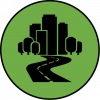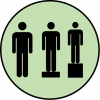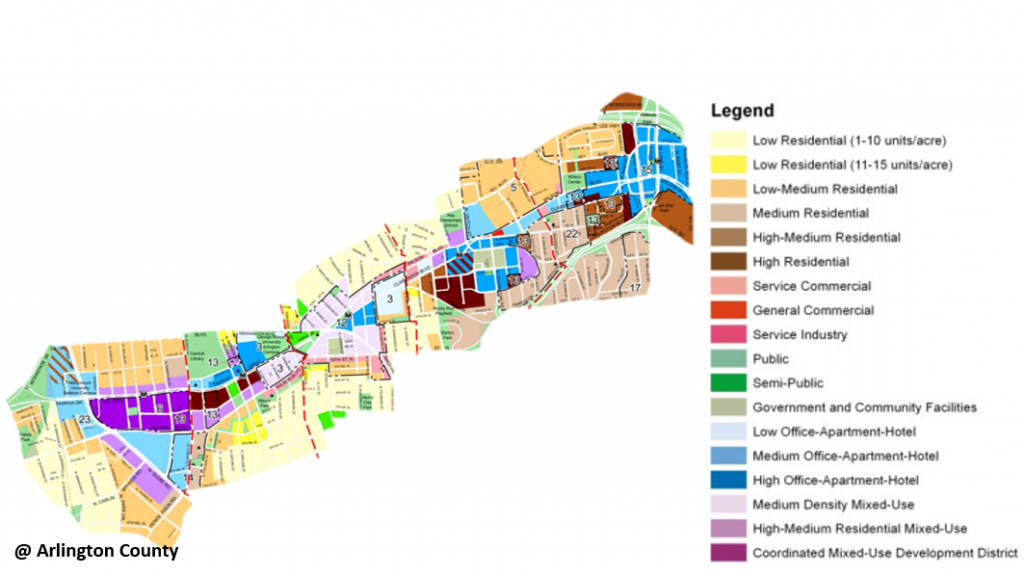
1. Presentation
Public transport and bicycles help each other by increasing their reach, allowing greater flexibility for the users and promoting urban sustainability. In this sense, providing access to public transport is essential for the promotion of cycling and discouraging the use of the car.
This measure uses urban planning interventions to facilitate access to public transport. The interventions aim to promote the urban density and diversity close to public transport and vice versa.
2. Objectives
- Creating the conditions for more people to use public transport, making it easier to change from private vehicles to less polluting means of transport, including cycling.
3. Measure’s Importance
Compared to a bus, the car emits four times more CO2, eleven times more NO and twelve times more hydrocarbons per km-passenger. Additionally, associating the bicycle with public transport allows them to increase their catchment area, making it more efficient and promoting the use of the bicycle. With this in mind, promoting the use of public transport has major impacts on the environment and public health.
1. Good Practices
– Apply strategic and comprehensive plans, instead of implementing isolated decisions (See Restriction and rectification of urban sprawl, Connecting people and schools, Car parking restrictions).
– Create good quality cycling and pedestrian infrastructures near public transport stations (See Cycling Network, Bike Parking Network, Bike sharing Systems).
– Manage car parking solutions to promote alternative means of transportation (See Parking pricing for vehicles and Car parking restrictions).
– Promote compact communities and mixed uses, encouraging the creation of businesses near public transport stations. Generally, at least 6 dwellings / 0.4 hectares are required in residential areas and 25 employees / 0.4 hectares in commercial zones, but this ratio depends on the conditions of area place and the type of public transport.
– Ensure that land use and transport policies are coordinated.
– Explain the principles behind the measures to make it clear its importance and impacts (See Information).
– Monitor citizens’ adaptation to changes and reformulate measures to respond to their needs without compromising sustainable ideals (See Management, Monitoring and Maintenance).
2. Actions
 | Bring public transports closer to people Placing public transport interfaces in high density areas in order to increase the number of people living in walking and cycling distances. It demands that the placement of new interfaces prioritizes the location of the population and existing transport infrastructures over financial issues. (See Restriction and rectification of urban sprawl, specially the Actions: Prioritize diverse constructions in non-consolidated areas and Renovate fiscal, planning and managing practices) |
 | Bring people closer to public transports Promote the concentration of housing supply near public transport in order to increase the number of people living in walking and cycling distances. It demands that the construction of residences prioritizes the location of existing transport infrastructures over financial issues. It is important to remember that the constructed residences should consider diversity issues, namely that the neighbourhoods should be dense but with diverse housing typologies, allowing them to be acquired by families from different socioeconomic classes (See Restriction and rectification of urban sprawl, specially the Actions: Prioritize diverse constructions in non-consolidated areas and Renovate fiscal, planning and managing practices). When creating housing, it is also important to create mixed use areas, with other services and businesses in its proximity (See Maximize accessibility in Restriction and rectification of urban sprawl). |
1. Impacts
 | Mobility system efficiency The measure is based on facilitating access to public transport, making its services more efficient. |
 | Livable streets Promoting the use of public transport and access through non-motorized means results in less automobile congestion, creating safer and more enjoyable public spaces. |
 | Protection of the environment Promoting public transport reduces pollution. |
 | Inclusion, equity and accessibility If the applied measures take into account the risks of real estate speculation and apply the necessary guidelines to avoid them, the promotion of urban density will allow the creation of different types of housing, accessible by people of different social and economic classes. Furthermore, promoting public transports creates a more equitable city for those who can’t support the cost of owning a car. |
 | Safety and comfort Reducing car traffic and promoting pedestrian and cycling mobility reduces the probability of accidents and increases neighbourhood self-surveillance. |
 | Economic value No impact. |
 | Awareness and acceptability No impact. |
Legend:
| Very positive | Positive | Neutral | Negative | Very negative |
2. Barriers
 | Legal There may be legal barriers hindering construction in urban voids and densification. |
 | Finance It will have planning and construction costs. These costs may be shared between private investors and public authorities. |
 | Governance There may be some difficulties in coordinating the different objectives between government entities and companies involved in building processes. |
 | Political acceptability There may be resistance in creating barriers to real-estate speculation. |
 | Public acceptability There may be resistance in creating barriers to automobile circulation or allowing the construction of infrastructures that will decrease the car parking supply and other services. However, barriers could be overcome with comprehensive information campaigns. |
 | Technical feasibility It requires a multidisciplinary study of the area where it is intended to act. In principle, the government entities involved have teams with the necessary expertise or the means to contact them. |
Legend:
| No barrier | Minimum barrier | Moderate barrier | Significant barrier |
3. Budget
| Area | Measure | Unit | Cost | Implementation year |
| Valongo, Porto Metropolitan Area (Portugal) | Acquisition of advisory services in mobility, traffic management and public transport | 2 years period | 59 448,00 € | 2019 |
| Porto, Porto Metropolitan Area (Portugal) | Acquisition of services to carry out a study for the implementation of the “single pass” in the scope of the Tariff Reduction Support Programme [PART] in public transport | 18 500,00 € | 2019 | |
| Moura, Beja (Portugal) | Acquisition of services to prepare the Municipal Master Plan (PDM) review | 74 980,00 € | 2019 | |
| Loulé, Faro (Portugal) | Acquisition of advisory services in urban planning and administration | 19 400,00 € | 2018 | |
| Paredes de Coura, Viana do castelo (Portugal) | Provision of the service of elaboration of the Local Housing Strategy of Paredes de Coura, within the framework of the Programme to support access to housing | 16 900,00 € | 2019 | |
| Vila Verde, Braga (Portugal) | Technical assistance in the area of urban rehabilitation and implementation of the strategic urban rehabilitation programme | 26 500,00 € | 2019 |
Case study 1: Arlignton General Land Use Plan (U.S.A.)

In 1960, Arlington County implemented a land-use plan that focused urban growth on intersecting poles of public transportation along the county’s business hub. Sustainable mobility was promoted through investments in accessibility, connectivity and availability of public transport information; through the urban design adapted to pedestrians and cyclists; and through restrictive measures to car use.
In addition, the density and of mixed uses were promoted, implementing a progressive reduction of density as the construction grew further away from the transport hubs.
Impact:
 | Mobility system efficiency The plan intends to facilitate access to public transport, making their service area more efficient. |
 | Livable streets Promoting the use of public transport and its access through non-motorized means results in less automobile congestion, creating safer and more enjoyable public spaces. In addition the urban design with focus on pedestrians sought to create pleasant public spaces. |
 | Protection of the environment Promoting public transport reduces pollution. |
 | Inclusion, equity and accessibility The county has effective measures that aim to promote the creation of low-cost housing and the provision of benefits to people with low income. |
 | Safety and comfort Reducing car traffic and promoting pedestrian and cycling mobility reduces the probability of accidents and increases neighbourhood self-surveillance. |
 | Economic value By allowing the location of employment sites near residential areas, neighbourhoods become more economically resilient. |
 | Awareness and acceptability No impact. |
Legend:
| Very positive | Positive | Neutral | Negative | Very negative |
Arlington (2019) Smart Growth. Accessed 17 June 2019. Available at: https://projects.arlingtonva.us/planning/smart-growth/
IMPIC. Base: Contratos públicos online. Available at: http://www.base.gov.pt/Base/pt
Kager, R., & Harms, L. (2017). Synergies from Improved Cycling-Transit Integration Towards an integrated urban mobility system Discussion Paper 2017-23 prepared for the Roundtable on Integrated and Sustainable Urban Transport 24-25 April 2017, Tokyo. Accessed 2 July 2019. Available at: https://www.itf-oecd.org/sites/default/files/docs/improved-cycling-transit-integration-synergies.pdf
Tolley, R. (1996). Green campuses – cutting the environmental cost of commuting. Journal of Transport Geography, 4(3), 213–217.
VTPI. Victoria Transport Policy Institute (2018). Transit Oriented Development. Online Transportation Demand Management (TDM) Encyclopedia. Accessed 17 June 2019. Available at: https://www.vtpi.org/tdm/tdm45.htm
